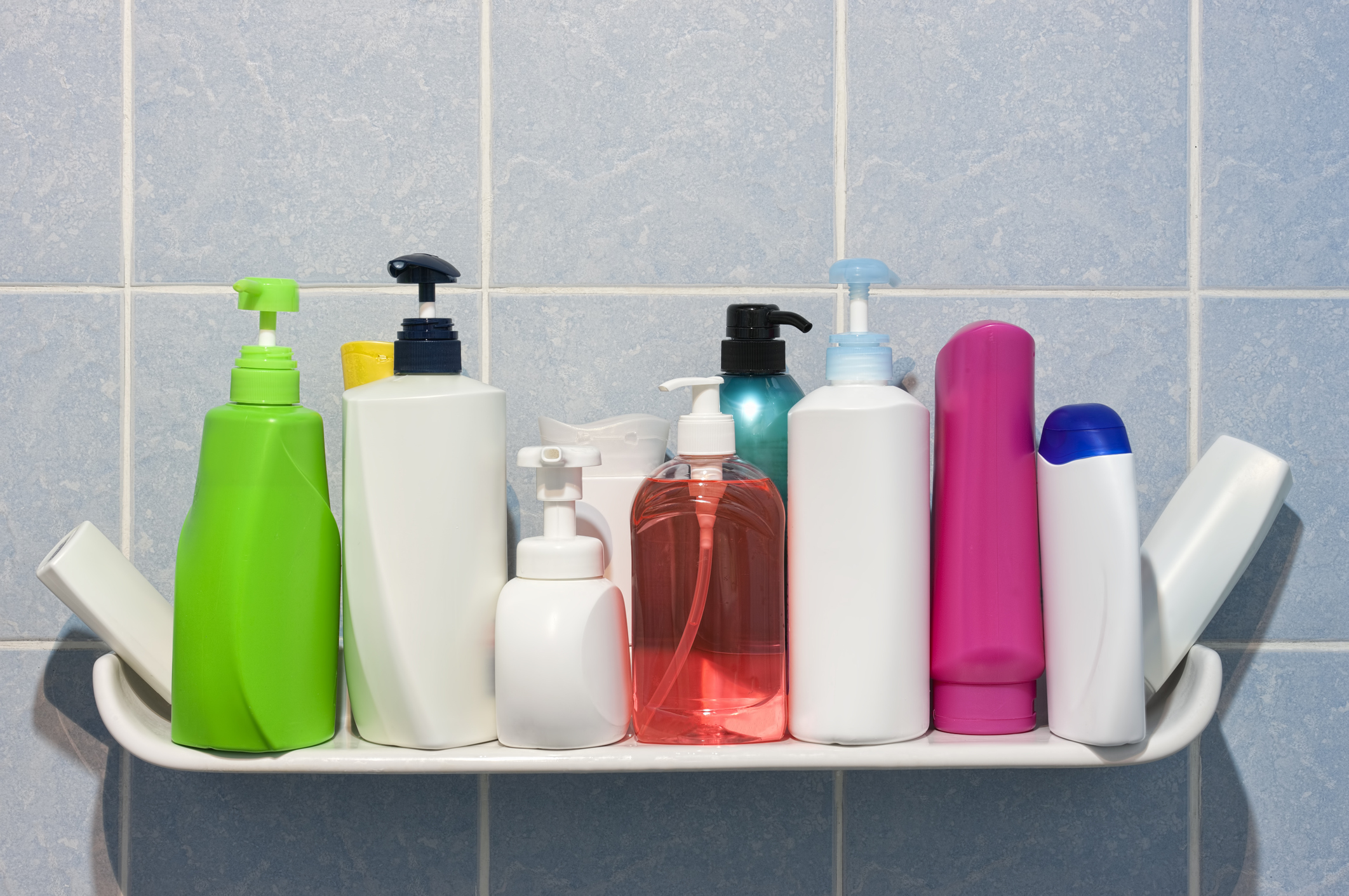Sharing Date7 Apr, 2022

Some of us can spend overmuch time in the shower and while it’s happening the environmental impact of our shower rises. The personal care products (PCPs: shampoos, shower gels and soaps) we use to wash our hair and body makes up a fraction of the environmental impact. The raw materials, packaging, manufacture and distribution account for five to twenty percent of the environmental impact in the PCPs lifecycle. The majority of the impacts occurs in the consumption phase due to water and energy needs.
PCPs’ manufacturers are working hard to reduce the impact of making their products. The entire manufacturing phase of the PCPs is being optimized to minimize the use of energy, fresh water and other resources. Raw materials are being chosen to drive improved sustainability and selected for their favorable environmental profile to keep a good water quality after usage. Packaging is being designed to support sustainability. Easy to rinse formulas are being developed which are highly biodegradable. Producers are now rendered responsible for not only production steps but also use and disposal phases. Consumer habits are very important, though, ensuring communication and awareness is expected from companies to the ultimate consumers.
Parallel with the changes in modern lifestyles and hygiene requirements, the market demand in PCPs is increasing both in Turkey and in the world. The relevant production sector in Turkey has performed well in terms of quality, production capacity and variety. Due to the international market requirements, Turkey with its high export capacity attaches importance to the European Union Ecolabel and directives on the environment. 1
<p>In 2018 a new regulation “Environmental Label Regulation” was put into force by the Ministry of Environment, Urbanization and Climate Change aiming to promote products or services that have reduced environmental impacts throughout the life cycle in line with sustainable environmental targets, to create a voluntary-based environmental label system to ensure the flow of information that is accurate and scientific to consumers, and to regulate the administrative and technical issues and principles and procedures regarding the implementation of the system.2 Additionally, in 2021, the European Commission has updated the European Union Ecolabel criteria for cosmetics and animal-care products. The updated criteria include rinse-off and leave-on cosmetics. As a consequence, all cosmetic products including personal care products like shampoos, shower gels and soaps, may apply for the EU Ecolabel. The purpose of the EU Ecolabel is to help to minimize the environmental impact of products on water, soil and biodiversity, contributing to “a clean and circular economy and a toxic-free environment.” Both Turkish and European ecological impact criteria regulations focus on the chemicals involved in formulations which are expected to be soluble in the biological media of wastewater treatment systems.
These chemicals have been found in a variety of environments, including wastewater, surface water, sediment, groundwater, and drinking water. These chemicals can harm both aquatic life and the animals that drink from these bodies of water. Researches have shown that the chemicals in personal care products can change the hormone levels in aquatic organisms, which can ultimately lead to a variety of health problems, including damaging their ability to reproduce.3
Life cycle assessment methodology is an option to measure these impacts on aquatic life. Impact categories may cover climate change, stratospheric ozone depletion, photo oxidant formation (smog), eutrophication, acidification, water use, noise, etc.4 Eutrophication potential is defined as impacts of excessive release of nutrients to water resources. The effect increases during the consumption phase due to the wastewater generated. The conventional wastewater treatment plants accelerate eutrophication and manipulates aquatic life in lakes by discharging such substances as nitrogen and phosphorus. The effects of eutrophication are caused by phosphate, nitrate and ammonium.
Some examples of eutrophication-driven chemicals included in standard PCPs are;
- Ammonium Chloride & Methylisothiazolinone
- Parabens
- Phthalates
- Triclosan
- Sodium laureth sulfate (SLES) & Sodium lauryl sulfate (SLS).
The easiest way to deal with wastewater has been accepted as “prevention”. To overcome adverse effects on municipal wastewater treatment system, individual wastewater recovery systems may be used. The gray water recovery systems lead to the prevention of the wastewater occurrence in use stage of PCPs and also provide opportunities to save clean water.
The importance of gray water recovery is linked to United Nation’s Sustainable Development Goals: Target 6.3 (By 2030, improve water quality by reducing pollution, eliminating dumping and minimizing release of hazardous chemicals and materials, halving the proportion of untreated wastewater and substantially increasing recycling and safe reuse globally) which considers improving sanitation and wastewater treatment infrastructures in cities and encouraging reuse of treated wastewater. This goal and targets aim to ensure public access to healthy, safe, drinkable and usable water as a precious resource for human. Unfortunately, global statistics show that recycling and reuse options are not preferable; as a result, mostly untreated wastewater has been released into nature. With regards to SDG Index and Dashboards Reports, better management options and innovative wastewater treatment concepts are needed since over 80 per cent of the countries has insufficient finance to meet national water, sanitation and hygiene targets. Smart technologies could improve all aspects of water resources and water, sanitation and hygiene management.5,6
SUGGESTIONS TO REDUCE DAILY IMPACTS
Minimizing your impact in shower is possible with little habitual changes.
1-Read the labels: avoid buying products includes chemicals which are harmful to environment and people health
2-Optimize water amount and temperature: hot water is harmful for your body, your energy and mostly for your budget
3-Use less: consider the required rinse water and time, save them all
Finally, if you feel confident and comfortable with your environmental efforts, share your strategy with others.
References
1) Turkish Ministry of Trade. Cosmetics and Personal Care Products Industry Report, 2020.https://www.trade.gov.tr/data/5b8fd4fb13b8761f041fee78/Cosmetics%20and%20Personal%20Care%20Products.pdf”>https://www.trade.gov.tr/data/5b8fd4fb13b8761f041fee78/Cosmetics%20and%20Personal%20Care%20Products.pdf, Date accessed March 2022.
2) Environmental Label Regulation (2018). Official Gazette No: 30570. Published on 19.10.2018.
3) Environmental Protection Agency: EPA. Contaminants of Emerging Concern Including Pharmaceuticals and Personal Care Products, 2020, https://www.epa.gov/wqc/contaminants-emerging-concern-including-pharmaceuticals-and-personal-care-products. Date accessed March 2022.
4) Pennington, D.W., Potting, J., Finnveden, G., Lindeijer, E., Jolliet, O., Rydberg, T., Rebitzer, G. (2004). Life cycle assessment Part 2: Current impact assessment practice. Environment International, 30, 721-739.
5) Gordon, M. (2018). Wasted Water Is a Wasted Opportunity. https://goexplorer.org/wasted-water-is-a-wasted-opportunity/. Date accessed March 2022.
6) United Nations. Sustainable Development Report, 2021. https://dashboards.sdgindex.org/ , Date accessed March 2022.

